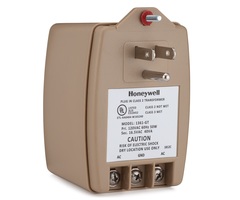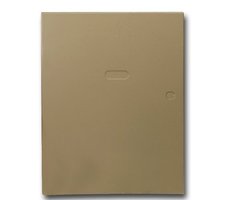How Do I Install the Resideo LTE-IA On My VISTA P-Series System?
You can install the Resideo LTE-IA on your VISTA P-Series System by testing its signal strength, mounting the communicator, powering down the system, providing power to the communicator, connecting the communicator to the panel, powering the panel back on, and programming the communicator.

The Honeywell Home LTE-IA is a dual-path communicator for VISTA P-Series Systems and VISTA TURBO Series Panels. The communicator sends out signals across the AT&T LTE Network and a local IP network. A hardwired ethernet connection is used for IP connectivity. For VISTA-PSeries Systems, the LTE-IA works with any VISTA 10P, VISTA 15P, VISTA 20P, or VISTA 21iP.
In order to use Total Connect 2.0 with the Honeywell Home LTE-IA, you must have a VISTA 15P or 20P running Firmware Version 9.12 or higher. A VISTA 21iP System will need Firmware Version 3.13 or higher. A VISTA 10P System cannot be used with TC2. You can determine the Firmware Version by checking the PROM Chip. The PROM Chip is a small black chip found on the main board for the panel. The chip should have a sticker showing the manufacture date and revision number. For more information on upgrading a PROM Chip, please review this FAQ.
Complete the following steps to install a Honeywell Home LTE-IA on a VISTA P-Series Panel:
1. Test the signal strength. The signal strength for the LTE-IA should be tested before mounting. Start by having the LTE-IA next to the VISTA Panel. Power on the LTE-IA by connecting its AC transformer and backup battery. You can check the signal strength by looking at the LED lights. If you see three (3) or more LED lights, two (2) of which being Yellow and one (1) Green, then the device has a strong enough signal. You alarm company can perform a more precise test once the module is registered.

2. Mount the device. The LTE-IA can be mounted to the wall. This can be done using zip-it anchors or wall anchors, which come included with the device. Make sure that the back plate is nice and level when lined up on the wall. Mark the keyholes with the unit properly leveled. You should be able to slide the wall anchors snugly into place. You can then secure the screws. Remember to leave space for the wall plate to sit on before tightening the screws. From there, rest the back plate on the screws. You can tighten the screws to secure the device.
3. Power down the panel. You must power down the VISTA System before you can continue. Disconnect the backup battery and unplug the transformer. There should be no remaining lights on the system or any of its connected accessories. If a device is receiving secondary power from another source, it will display "Open CKT", "OC", or "ECP Error". This is normal, and it means the system is no longer powered on.
If adding an LTE-IA to an older VISTA-21iP Panel, you must disable the internal communicator in the panel. The panel can only support either an external communicator or an internal communicator. It cannot support both. With system powered down, find the jumper marked "Internal IP/GSM Jumper", and move it to the bottom two pins. This removes power from the internal communicator, which allows you to add an external LTE communicator. If you want to use Total Connect 2.0, make sure the VISTA-21iP panel is at least version 3.13 or higher. If the panel is an older version, upgrade the entire system to a VISTA-21iPLTE, which supports a snap-in LTE communicator.

4. Power the communicator. The LTE-IA uses a Honeywell 1361 Transformer. This device can power just the LTE-IA, or it can power both the communicator and the system. This is the same transformer that comes with the VISTA-21iP.

If you are using the transformer to power only the communicator, then connect Terminals 1 and 2 on the communicator to the transformer. Polarity doesn't matter here, since this is AC Power. Next, you should connect Terminal 5 (AUX+) on the panel to Terminal 3 (ECP+) on the communicator. Then connect Terminal 4 (GND) on the panel to Terminal 4 (GND) on the LTE-IA. Then connect the data wires. Terminal 6 (Data Out) on the LTE-IA should be wired to Panel Terminal 6 (Data In). Finally, connect LTE-IA Terminal 5 (Data In) to Panel Terminal 7 (Data Out). You can plug in the transformer when finished.
If you want to use the transformer to power both the panel and the LTE-IA, then the setup is a bit different. Remove the existing transformer, and disconnect its two (2) wires. Connect those wires to the new 1361 Transformer. Connect Terminals 1 and 2 on the VISTA System to LTE-IA Terminals 1 and 2. Doing this will allow the LTE-IA share the connection with the transformer that is also used to power the panel. Terminal 3 on the LTE-IA (ECP+) should connect with Terminal 5 on the Panel (AUX+). Panel Terminal 4 (GND) will connect with LTE-IA Terminal 4 (GND). Terminal 5 on the LTE-IA (Data In) will connect with Panel Terminal 7 (Data Out). Terminal 6 on the LTE-IA (Data Out) will connect with Panel Terminal 6 (Data Out). Refer to the diagram below.

5. Provide backup power. You should provide a backup power source to the LTE-IA. The module comes with a 6VDC, 3.1Ah backup battery. It can be placed in the lower-right side of the back plate. A retainer clip should be used to keep it in place. The red and black spade connectors should be matched at the battery terminals. The battery can plug into the J1 battery port on the LTE-IA.
6. Connect the ethernet cable. An ethernet cable should be run from your IP router to the LTE-IV. The cable connects with the RJ45 port on the communicator. Check the diagram below.

7. Restore panel power. Now is the time to restore the panel power. If you are using the same transformer for both the LTE-IA and the panel, plug in the transformer. If not, plug in the panel transformer, and then reconnect the backup battery. Give the system a few minutes to boot up. If any faults are shown, try to do a disarm with the command [Master Code] + [1]. Keep in mind that a tamper cover trouble will occur in the cover is off the LTE-IA. You can fix this later.
8. Activate the LTE-IA. Now you can activate the LTE-IA. This involves registering the module with AlarmNet360. You should contact your monitoring company to help you. Remember that Alarm Grid offers monitoring plans for this purpose. You will need a Gold Plan or higher (Self or Full) to use this communicator for cellular communication with Alarm Grid. If you intend to use the LTE-IA for IP only, then you can use a Silver or Bronze Plan (Self or Full). More information is available on our monitoring page.
Did you find this answer useful?
We offer alarm monitoring as low as $10 / month
Click Here to Learn MoreRelated Products



Related Videos
Related Categories
- Answered



